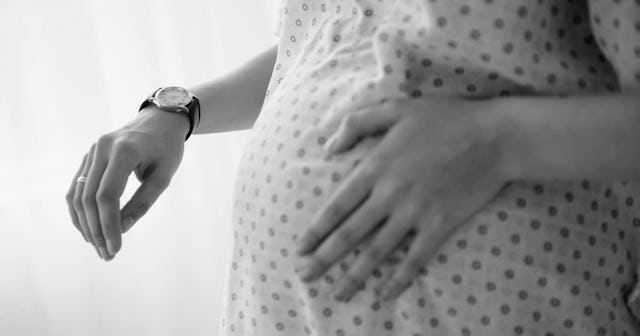Drug Overdose And Suicide Are Leading Causes Of Postpartum Death In CA

“Deaths caused by drugs and suicide are a major contributor to mortality in the postpartum period and warrant increased clinical attention,” wrote the study’s authors
Due to all the physical, biochemical and circumstantial changes that occur during pregnancy and early motherhood, it’s not uncommon for women to suffer emotionally. An estimated one in seven new mothers struggle with postpartum depression, a statistic shocking in and of itself. What’s even worse, is that many women don’t make it out of the postpartum period at all. According to a new study conducted by the American Journal of Obstetrics and Gynecology, two of the leading causes of postpartum death in the state of California are drug overdose and suicide.
Researchers found that out of about 1.059 million women, the leading cause of death was obstetric-related problems (6.52 per 100,000 person-years) with drug-related deaths coming in second at a rate of 3.68 per 100,00. Suicide was the seventh leading cause, with 1.42 women per 100,000 losing their lives.
2020 Mom
“Deaths caused by drugs and suicide are a major contributor to mortality in the postpartum period and warrant increased clinical attention,” concluded the study’s authors, who urged the increased identification and prevention of women at risk.
September is National Suicide Prevention Month, so there is no better time to educate ourselves about how to personally identify, support and help those struggling with postpartum stress and depression — which can sometimes be so subtle even those closest to them don’t notice.
“Even loving partners and loved ones can easily miss signs that a woman is experiencing high levels of distress because postpartum women go to great lengths to present themselves as if they are in control and feeling good,” Karen Kleiman, author and founder of The Postpartum Stress Center, LLC on behalf of 2020 Mom, tells Scary Mommy. Even more, is that postpartum depression doesn’t have a one-size-fits-all look to it.
For example, a mom who isolates herself, withdraws from friends or family, becomes quiet or shuts down, may not appear to be as distressed as a mom who is experiencing panic attacks and saying she can’t stand the way she feels. However, “both moms are suffering, but presenting their distress differently,” she points out. Kleiman suggests looking your loved one straight in the eye and asking her how she is feeling. Then, look her in the eyes and ask again.
She maintains that other signs and symptoms can include:
- Mood changes
- Increased irritability, anger, rage
- Extreme feelings/expressions of guilt, shame, worthlessness
- Sleeping problems (unrelated to baby’s sleep schedule)
- Appetite changes
- Expressions of distress, hopelessness
- Excessive crying, sadness
- Confusion
- Over attachment or under attachment to baby
- Extreme unrelenting worry, obsessing, ruminating that does not remit with reassurance
Kleiman also points out that if a woman has a history of depression or anxiety, she is more at risk to have it again during pregnancy and the postpartum period. “If you are worried about the way she is feeling or behaving, this should be taken seriously and brought to the attention of a trusted healthcare professional,” she adds.
It’s also important for women to be proactive during their pregnancy in opening up the conversation with their medical team and loved ones, particularly if she has a history or family history of depression or other mental health issues. “We are way past the point when women should believe they need to hide how they are feeling and ‘be strong’ because they think they will be judged a bad mom or other cultural misinterpretation of distress associated with motherhood,” she explains.
The Postpartum Stress Center has a Postpartum Pact available on their website that is a great tool, according to Kleiman. “The lists are itemized so the couple can go over each section, line by line and have a conversation about their concerns and possible symptoms to keep an eye out for,” she explains. It is divided into categories:
- Here’s what I need you to look for
- Here’s what I need you to listen for
- Here’s what I need you to do
- Here’s what I need you not to do or say
- Here’s what I need you to say
- Here’s what I need you to remember.
She also maintains the importance of OBGYNs of doing their part to identify postpartum depression, which involves taking their patients’ concerns seriously, rigorously screening them and extensively discussing postpartum depression with them.
Bottom line: we need to make sure everything is being done to give moms-to-be and new mothers the mental health resources they need.
This article was originally published on